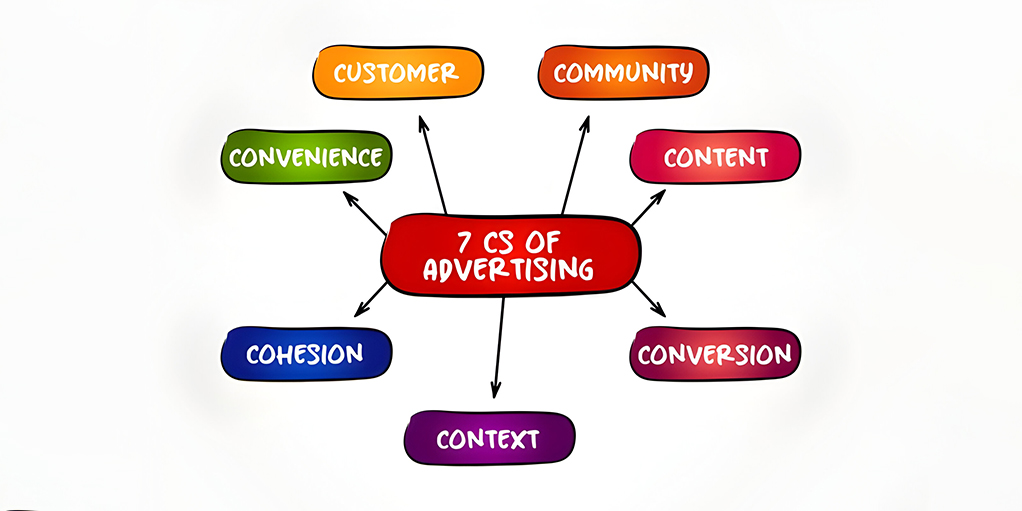Introduction
In the ever-evolving world of digital marketing, businesses must adopt strategies that effectively connect with their audience and drive engagement. One such framework that has gained traction is the 7Cs of Digital Marketing. This approach provides a holistic view of the elements essential to a successful digital marketing strategy. Let’s dive into each of the 7Cs and understand how they contribute to a robust digital marketing plan.
Customer
The first and foremost “C” is the customer. In digital marketing, understanding your customer is the foundation of all activities. This involves identifying your target audience and understanding their needs, preferences, behaviors, and pain points. With this knowledge, you can create personalized marketing campaigns that resonate with your audience.
Key Actions:
- Develop detailed buyer personas to represent your target audience.
- Use analytics tools to gather insights into customer behavior.
- Engage with your audience through surveys, social media, and feedback loops.
Content
Content is at the heart of digital marketing. It’s what attracts, engages, and converts customers. High-quality, relevant, and valuable content helps build trust with your audience and enhances your brand’s visibility online. Whether it’s blog posts, videos, infographics, or social media updates, content should always be aligned with the interests and needs of your target audience.
Key Actions:
- Create a content strategy that aligns with your business goals and audience needs.
- Use SEO techniques to optimize your content for search engines.
- Diversify your content formats to cater to different audience preferences.
Context
Context refers to the environment in which your content is consumed. It’s about delivering the right message to the right person at the right time. In digital marketing, context is crucial for personalization and relevance. Understanding the context in which your audience interacts with your content enables you to tailor your messages to meet their needs.
Key Actions:
- Leverage data analytics to understand the context of customer interactions.
- Use contextual marketing to deliver personalized content based on user behavior and preferences.
- Ensure that your content is optimized for various devices and platforms.
Community
Building a community around your brand is essential for fostering engagement and loyalty. A strong community supports your brand and amplifies your message through word-of-mouth marketing. Digital platforms like social media, forums, and online groups provide the perfect environment for cultivating a community of loyal followers.
Key Actions:
- Engage with your audience on social media by responding to comments and messages.
- Create a sense of belonging by offering exclusive content, rewards, or events for community members.
- Encourage user-generated content and testimonials to strengthen the community bond.
Convenience
In today’s fast-paced world, convenience is key. Your digital marketing efforts should focus on making it as easy as possible for customers to interact with your brand. This includes simplifying the user experience on your website, ensuring easy access to information, and providing multiple channels for communication and purchase.
Key Actions:
- Optimize your website for speed, navigation, and mobile responsiveness.
- Offer multiple payment and communication options to cater to different customer preferences.
- Ensure your call-to-actions (CTAs) are clear, concise, and easily accessible.
Cohesion
Cohesion refers to the consistency of your brand’s message across all digital channels. A cohesive digital marketing strategy ensures that your brand’s voice, tone, and values are uniform across platforms, creating a seamless experience for your audience. This consistency builds trust and strengthens your brand’s identity.
Key Actions:
- Develop brand guidelines that outline your voice, tone, and visual identity.
- Ensure that all content creators and marketers adhere to these guidelines.
- Use integrated marketing communication (IMC) to align your messaging across all digital channels.
Conversion
The ultimate goal of digital marketing is conversion, whether it’s generating leads, making sales, or achieving other business objectives. Conversion is the result of effectively implementing the previous six Cs. By focusing on your customers, delivering valuable content, understanding context, building a community, ensuring convenience, and maintaining cohesion, you increase the likelihood of converting your audience into loyal customers.
Key Actions:
- Use analytics to track and measure conversion rates across different channels.
- Continuously optimize your marketing efforts based on data-driven insights.
- Implement A/B testing to refine your strategies and improve conversion rates.
Conclusion
The 7Cs of Digital Marketing provide a comprehensive framework for developing and executing effective digital marketing strategies. Businesses can create a powerful and cohesive marketing plan that drives results by focusing on the customer, content, context, community, convenience, cohesion, and conversion. As digital marketing continues to evolve, staying true to these principles will help your brand stay relevant, competitive, and thriving in the digital landscape.





